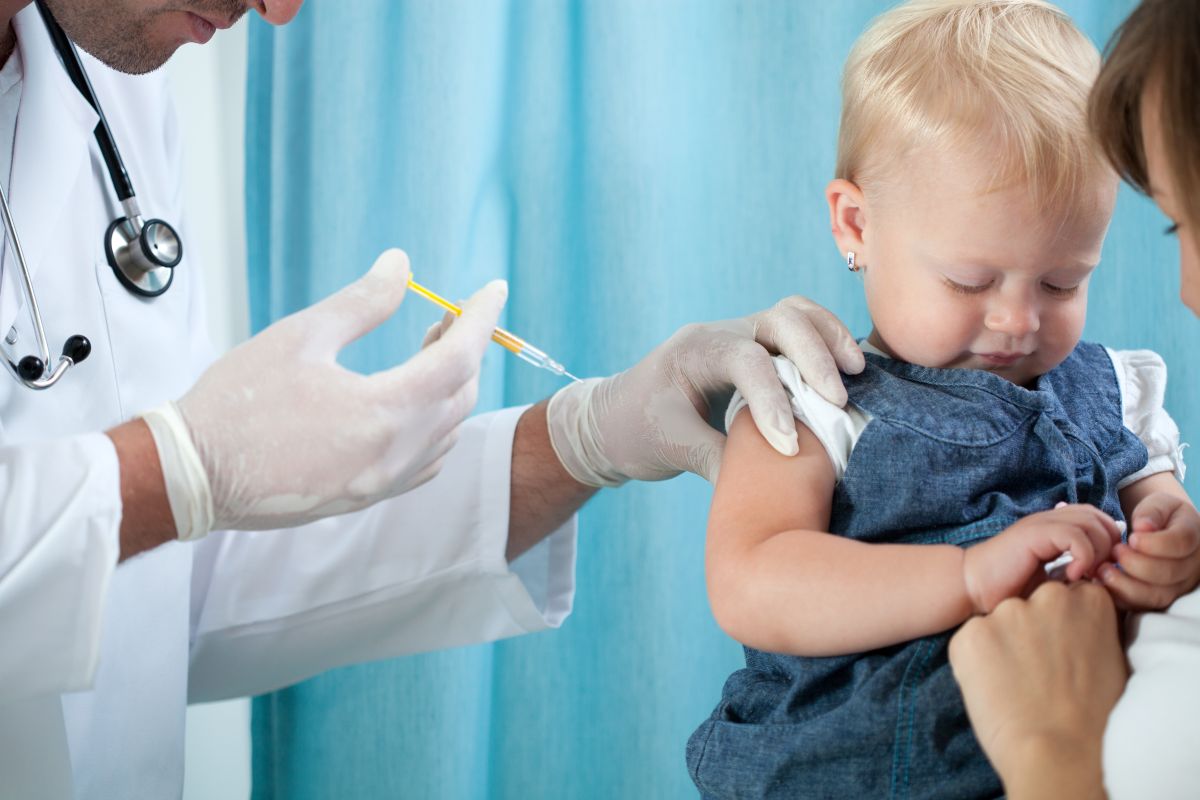My Health My Right the theme for world health day this year
World Health Day is an annual global health awareness campaign celebrated on 7 April, organised by the World Health Organization (WHO).
As many as 20 million children worldwide ~ more than 1 in 10 ~ missed out on lifesaving vaccines such as measles, diphtheria and tetanus in 2018, according to new data from WHO and UNICEF.

Representational image (Photo: IStock)
Globally, 20 million children missed out on life-saving measles, diphtheria and tetanus vaccines in 2018 as new estimates find dangerous stagnation of global vaccination rates, due to conflict, inequality and complacency.
As many as 20 million children worldwide ~ more than 1 in 10 ~ missed out on lifesaving vaccines such as measles, diphtheria and tetanus in 2018, according to new data from WHO and UNICEF. Globally, since 2010, vaccination coverage with three doses of diphtheria, tetanus and pertussis (DTP3) and one dose of the measles vaccine has stalled at around 86 per cent. While high, this is not sufficient, the report, released globally on 15 June, points out. Globally, across countries and communities, 95 per cent coverage is needed, to protect against outbreaks of vaccine-preventable diseases.
“Vaccines are one of our most important tools for preventing outbreaks and keeping the world safe,” said Dr Tedros Adhanom Ghebreyesus, Director-General of the World Health Organisation. “While most children today are being vaccinated, far too many are left behind. Unacceptably, it’s often those who are most at risk ~ the poorest, the most marginalised, those touched by conflict or forced from their homes ~ who are persistently missed.”
Advertisement
Most unvaccinated children live in the poorest countries, and are disproportionately in fragile or conflict-affected states. Almost half are in just 16 countries ~ Afghanistan, the Central African Republic, Chad, Democratic Republic of the Congo (DRC), Ethiopia, Haiti, Iraq, Mali, Niger, Nigeria, Pakistan, Somalia, South Sudan, Sudan, Syria and Yemen. If these children do get sick, they are at risk of the severest health consequences, and least likely to access lifesaving treatment and care.
Measles cases
Measles outbreaks reveal entrenched gaps in coverage, often over many years. Stark disparities in vaccine access persist across and within countries of all income levels. This has resulted in devastating measles outbreaks in many parts of the world ~ including countries that have high overall vaccination rates. In 2018, almost 350,000 measles cases were reported globally, more than doubling from 2017.
“Measles is a real time indicator of where we have more work to do to fight preventable diseases,” said Henrietta Fore, UNICEF’s Executive Director. “Because measles is so contagious, an outbreak points to communities that are missing out on vaccines due to access, costs or, in some places, complacency. We have to exhaust every effort to immunise every child.”
Human papillomavirus
For the first time, there is also data on the coverage of human papillomavirus (HPV) vaccine, which protects girls against cervical cancer later in life. As of 2018, 90 countries had introduced the HPV vaccine into their national programmes. Just 13 of these are lower-income countries. This leaves those most at risk of the devastating impacts of cervical cancer still least likely to have access to the vaccine.
India’s strategy
Immunisation is a key priority area for India and extensive efforts are being made to reach and vaccinate every child even in the remotest part of the country. India launched Mission Indradhanush (MI), a key strategy to reach the unreached and conducted multiple rounds of immunisation sessions to cover children and pregnant mothers missing their scheduled vaccination dose. In addition, the immunisation programme is focusing on preventing more diseases by introducing new vaccines under the programme. Rotavirus vaccine and Pneumococcal vaccines were introduced under Universal Immunisation Programme as part of efforts to reduce Pneumonia and Diarrhea, the two major killers of children, under-five years.
Measles Rubella campaign
Measles is a highly contagious virus and spreads rapidly in unvaccinated children causing symptoms from rash to blindness, pneumonia to deaths. Rubella virus is the primary cause of congenital rubella syndrome, leading to abortions and children born with birth defects of heart, eye and brain. Both Measles and Rubella can be effectively protected by a highly effective Measles-Rubella (MR) vaccine. India is conducting one of the world’s largest MR campaigns to eliminate Measles and control Rubella in the country. As of 1 July, more than 30 crore children and adolescents between 9 months to 15 years of age have been vaccinated with one dose of MR vaccine in 32 states. The MR vaccine is a safe and effective vaccine and has been pre-qualified by WHO for its quality and safety and is licensed by the Union government’s Central Drugs Standard Control Organisation. The MR vaccine being used in the campaign is made in India and is exported for use world over.
Advertisement